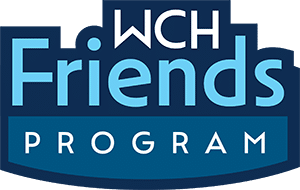
We all want to keep our children safe, but unfortunately, accidents and injuries can happen. Fortunately, most injuries can be treated at home with self-care practices and careful observation. However, if you are unsure about the type of care your child needs, you should always contact your pediatrician for advice.
Let’s talk about the most common childhood injuries, how to keep your child safe, and where you can go in Wooster, Ohio, for world-class pediatric care.
FALLS
According to the Centers for Disease Control and Prevention (CDC), falls are the most common cause of nonfatal injuries for children aged 0-19 years. They can occur for several reasons, such as falling:
- Down the stairs
- Off of play equipment at the playground
- In a slippery bathtub or on a slippery floor
- Out of beds (without railings)
- During sports or recreational activities, such as running, riding a bike
- Out of windows or off of balconies
The severity of the fall will determine the best type of treatment required. For minor injuries, and as long as the child is alert, they can usually be treated successfully at home, such as with rest, by cleaning any minor wounds with an antibacterial wash, and carefully monitoring children for signs of a concussion or more serious injury.
Injuries such as falls can cause concussions in children and teens, which can be serious if left untreated. A concussion is a traumatic brain injury that occurs if there is a blow, bump, or jolt to the head, which in severe cases, can damage the brain. If your child has a fall and experiences any of the following symptoms, you should seek immediate medical care:
- Breathing difficulties
- New or worsening bleeding or swelling, or headaches
- Signs of concussion (confusion, clumsiness, headaches, nausea, vomiting, loss of consciousness, memory loss surrounding the injury, mood/behavior changes)
- Suspected broken bones or spinal or head injury
BEING STRUCK BY OR AGAINST AN OBJECT
Children, particularly those aged between 0-14, can be vulnerable to impact-related accidents. This includes:
- Walking or running into something, such as a piece of furniture, door, or wall
- Being hit by an object such as a baseball or falling object/piece of furniture
- Being hurt during contact sports, such as football, basketball, or baseball
These types of accidents can lead to various injuries, such as broken bones and head or neck injuries, and in some instances may include internal injuries. Always seek medical care if they have severe symptoms, such as those listed under falls.
DROWNING
There are as many as 8,000 emergency department visits for non-fatal drowning every year, and it is the leading cause of injury or death for children aged 1-4 years.
You can help to prevent drowning by:
- Ensuring children learn basic swimming and water safety skills
- Closely supervising children when in or around water, including bathtubs
- Ensure swimming pools are child-safe and have a four-sided fence to keep them fully enclosed
- Removing all pool toys from the pool area that could attract children to the water
- Ensure your child wears a life jacket when in or around natural water or if they are a weaker swimmer
- Ensuring they always swim with a buddy and use places with a lifeguard
- Knowing the risks of natural waters and always check tides, currents, and weather conditions and look for other hazards, such as rocks or vegetation under the water.
- Learning CPR
SUFFOCATION
Suffocation, or being unable to breathe, can take many forms. The CDC includes strangulation and choking on food and other objects in suffocation-related injuries. In 2017 it was reported that 26% of all sudden unexpected infant death (SUID) resulted from accidental suffocation or strangulation in bed (ASSB). Suffocation-related injuries can also result from the improper use of infant sitting devices, such as car seats and bouncers, especially when used for routine sleep.
TIPS ON KEEPING CHILDREN SAFE
Here are some tips to help keep your child safe:
- Keep dangerous items out of the reach of children, such as medicines, weapons, sharp objects, dangerous kitchen or yard equipment, matches and lighters, batteries, and small items that could be swallowed.
- Keep young children out of areas where they could come into contact with fire, hot objects, or hot steam, such as when using hot pans.
- Learn how to recognize and respond to a concussion and seek medical care as soon as possible if someone exhibits a concussion.
- Fit smoke alarms in your home
WHEN DOES A CHILD NEED EMERGENCY CARE?
If your child has an injury and you are unsure what treatment they need, contact your pediatrician as soon as possible. It is better to overreact than to underreact when it comes to the health and well-being of your child.
PEDIATRICIAN IN WOOSTER, OHIO
At Wooster Community Hospital, we provide high-quality, comprehensive pediatric care. Our pediatricians offer a range of services, including diagnosis and treatment for many childhood injuries and illnesses, well-child visits, and vaccinations.
At Wooster Community Hospital, we also offer emergency care services and walk-in express care to ensure your child receives the expert care they deserve. We have the best medical professionals along with cutting-edge technology to provide total care for your whole family.
To learn more about our pediatric medical services or to schedule an appointment with one of our providers, call us at (330) 263-8144, or alternatively, you can request an appointment via our online form.

 Cancer Care
Cancer Care
 Rehabilitation
Rehabilitation
 Women's Health
Women's Health
 Behavioral Health
Behavioral Health
 Cardiovascular Care
Cardiovascular Care
 Surgery
Surgery


